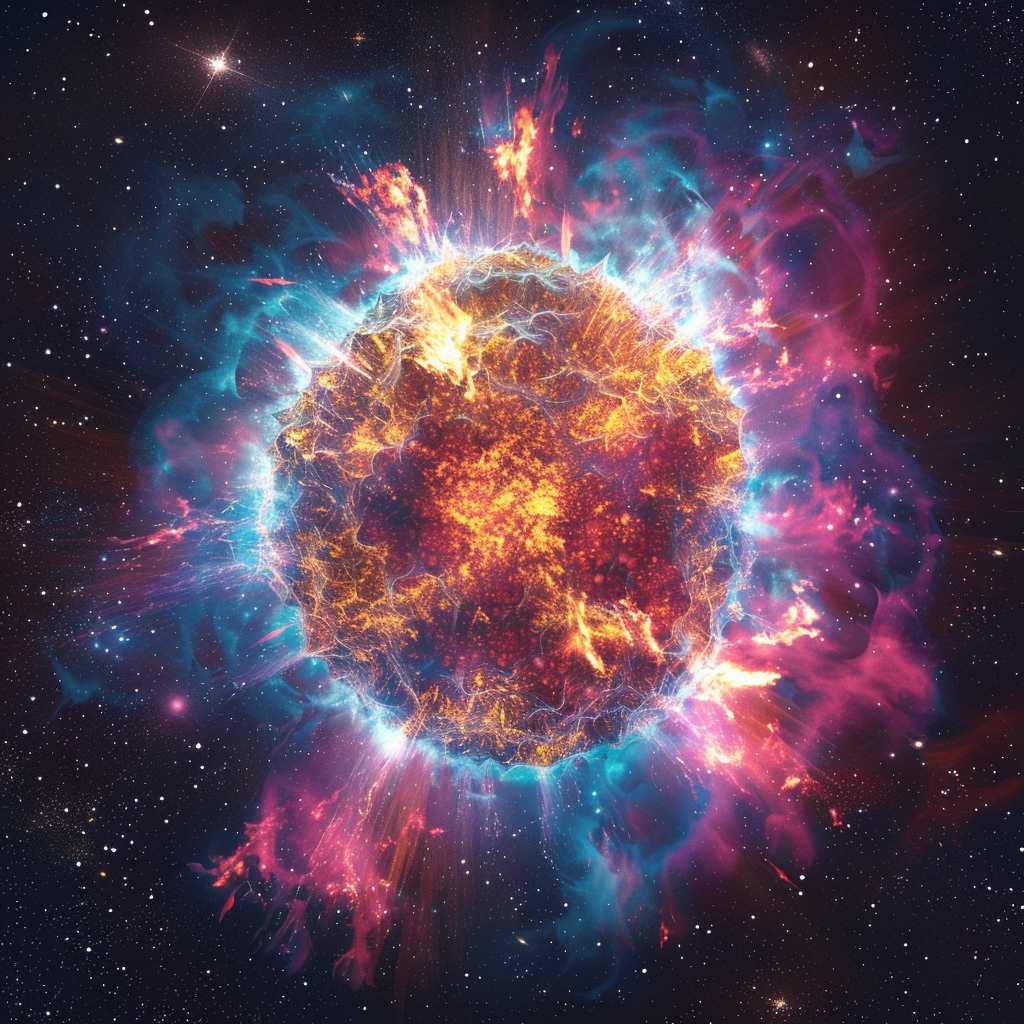Magnetars are characterized by their extremely powerful magnetic fields, which are thousands of times stronger than those of typical neutron stars and over a trillion times more potent than the Earth’s. These magnetic fields are so intense that they affect the structure of the vacuum of space around them and can significantly influence atomic structures, distorting electron clouds into narrow, cigar-shaped formations.
Formation and Characteristics
Magnetars are believed to form from supernova explosions, though not every supernova results in a magnetar. It’s a combination of factors including the mass of the progenitor star and the nature of the supernova itself that leads to their creation. Post-explosion, as the neutron star cools, its magnetic field, rotating with the star, is amplified through dynamo processes, reaching magnitudes that defy comprehension.

Phenomena and Implications
The intense magnetic fields of magnetars give rise to spectacular astrophysical phenomena, such as starquakes and giant flares. Starquakes, similar to earthquakes but on a neutron star, occur when the crust of the magnetar adjusts to the magnetic stress it undergoes. These adjustments can release gamma rays and X-rays into space. Giant flares, on the other hand, are even more dramatic; they can release more energy in a fraction of a second than the Sun emits in 250,000 years.
The most extreme flares can disrupt the Earth’s upper atmosphere and have potential implications for satellite safety and communication systems, despite the vast distances separating us from these cosmic events. The study of magnetars is not only crucial for understanding neutron stars but also for providing insights into the behavior of matter under extreme magnetic fields, which challenges current physical theories.
Theoretical and Observational Challenges
Studying magnetars presents unique theoretical and observational challenges. The physics of extremely strong magnetic fields is still not well understood, and these fields push the limits of known physics. Observationally, magnetars are transient and unpredictable. Detecting their bursts and understanding their irregular behavior requires highly sensitive and wide-ranging astronomical instruments, such as those onboard the Fermi Gamma-ray Space Telescope and the Chandra X-ray Observatory.
The insights gained from studying magnetars could potentially revolutionize our understanding of the universe’s structure and fundamental laws of physics. They offer a natural laboratory for studying matter in conditions that cannot be replicated on Earth, providing clues to the mysteries of quantum chromodynamics, particle physics, and the interstellar medium.
In conclusion, the study of magnetars represents a thrilling frontier in astronomy, merging astrophysics, particle physics, and cosmology. Their extreme conditions and the dramatic phenomena they exhibit not only challenge our understanding of the universe but also enrich it, offering profound insights into the most powerful forces in existence. This is a clear example of how exploring the most extreme objects in the cosmos can illuminate the fundamental principles governing all matter.





